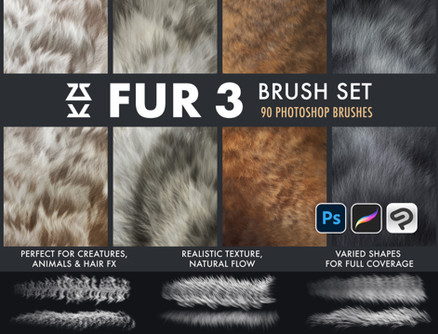HOME | DD
 DartingDragon-ARPG — MHR Odd Tracks G
DartingDragon-ARPG — MHR Odd Tracks G

Published: 2022-01-04 14:38:32 +0000 UTC; Views: 2106; Favourites: 28; Downloads: 0
Redirect to original
Description
Submission: Here!Species:
Male: Peliceron
Female: Mosian
Class: Bird Wyvern
Rank: G
Element: Water
Weakness: Thunder
Biological Description:
Both species can be found living within the Gnarled Tropics and Cascade Peaks. They are piscivores, meaning they consume fish. Their long legs allow them to walk in shallow water with ease and can spend hours standing to hunt fish with their beaks. Their diet also includes Plesioth, Ludroth and Epioth. Their slender frames allow them to dive in deep water, with webbed feet propelling them deeper in order to catch prey that live farther down. Mosian can only catch a few fish at a time, while the Peliceron's pouch allows them to hold more fish as they hunt. The hooked talons at the end of their wings lets the species grab slippery fish and other prey similar to a fisherman's fish hook. While the two species hunt the same prey, they hunt at different times that limits conflict in fishing spots. Piceron are known to hunt in the day while Mosian hunt at night, with each species' feathers aiding at their preferred time of hunting and allow them to blend into their surrounding.
Their main conflict is with another bird wyvern called the Toridcless. Battles can quickly become dangerous due to both of them sharing opposing weaknesses, with Toridcless weak to water and Peliceron/Mosian weak to thunder. It is common to see these species fight over territory in Cascade Peaks for the best hunting and nesting grounds. Another common enemy is the Mizutsune for their shared diet of fish, and the species will often fight for hunting grounds.
Peliceron defend themselves by spitting up globs of thick water they store inside their pouch onto a target, slowing their speed to allow the bird wyvern to deliver devastating attacks with its bill and hooked talons. In the case a Peliceron doesn't have the chance to fill their pouch with water, they will sink their hooked talons into the target before tearing it out and causing a bleeding effect.
Mosian defend themselves by causing a devastating bleeding effect with their hooked talons that can sink themselves into the target before ripping it out. When the target starts bleeding, the scent aggravates the Mosian and causes them to deliver harder attacks in an effort to bring the target down quicker while it's wounded.
In a similar fashion to the Rathalos and Rathian, the Peliceron and Mosian have developed different adaptions to keep them alive. These adaptions go as follows:
The Mosian is more aggressive then their male counterpart. Their feathers have adapted to become black in what researchers believe is to appear similar to a Black Diablos in an effort to deter would-be attackers and protect their nests. Further encouraging this hypothesis is the Mosian will raise her wings and have the upward-pointing hooks appear over her head to simulate a Black Diablos' horns, meanwhile the feathers behind her horns will raise to simulate the Diablos' crest. While this obviously wouldn't work for individuals up-close, for any stray passerby catching a glimpse it would be harder to differentiate. During the nesting season, Mosian will stay with the nest and use her feathers to insulate the eggs. Should anyone accept her chosen mate appear, Mosian will hiss and act increasingly defensive before fiercely attacking the intruder. While a Mosian will give chase to ensure the intruder leaves, she will never move too far from the nest, making egg-stealing especially difficult for any would-be tryers.
The Peliceron is less aggressive than their female counterpart. Unlike Mosian, this species is white and carries bright colors along their pouch, back and tail feathers. During the nesting season, Peliceron are always out hunting to feed their mate and children, which are called poffs. In order to provide the most food for the growing family, Peliceron have a pouch that lets them store more fish inside to limit trips back and forth from nesting and hunting grounds.
Key Differences between Peliceron and Mosian:
Peliceron:
- Peliceron are always white/off-white.
- Pouch/webbed feet/colored feathers/face/beak are all saturated colors. These colors come from the Mosian, who carries dark rainbow feathers. Only one of the Mosian's rainbow feather colors will become dominant in the Peliceron. This is shown with the orange-feathered Peliceron and headshot of the yellow-feathered Peliceron, each carrying a different dominant color from the Mosian.
- The tip of the tail feathers are always wide and much larger than the Mosian's. Their head/shoulder feathers are much smaller than the Mosian's.
- The tip of the bill close to where the eye is is always pointed upward and leaves the head slightly.
- Hooked talons are always curved downwards.
- Horns are always curved upwards.
- The first 'tooth' of the bill/beak is always larger than the one in the back. Similarly, the 'chin' of the beak is always pointed forwards and bigger than the Mosian's.
Mosian:
- Mosian are always black/off-black.
- Colored feathers/shoulder feathers are dark rainbow colored. All Mosians carry a dark rainbow that must show in at least the crest, trailing and tail feathers.
- The tip of the tail feathers are always 'closed' and much smaller than the Peliceron's. Their head/shoulder feathers are much bigger than the Mosian's.
- The tip of the bill close to where the eye is is always close to the head and doesn't curve upwards like the Peliceron's.
- Hooked talons are always curved upwards.
- Horns are always curved downwards.
- The first 'tooth' of the bill/beak is always smaller than the one in the back. The 'chin' of the beak is curved backwards and is smaller than the Peliceron's.
Poffs:
- Baby Mosian/Peliceron
- Always grey/off-grey. Their feathers with darken/lighten and more defining features will appear as they age.

























